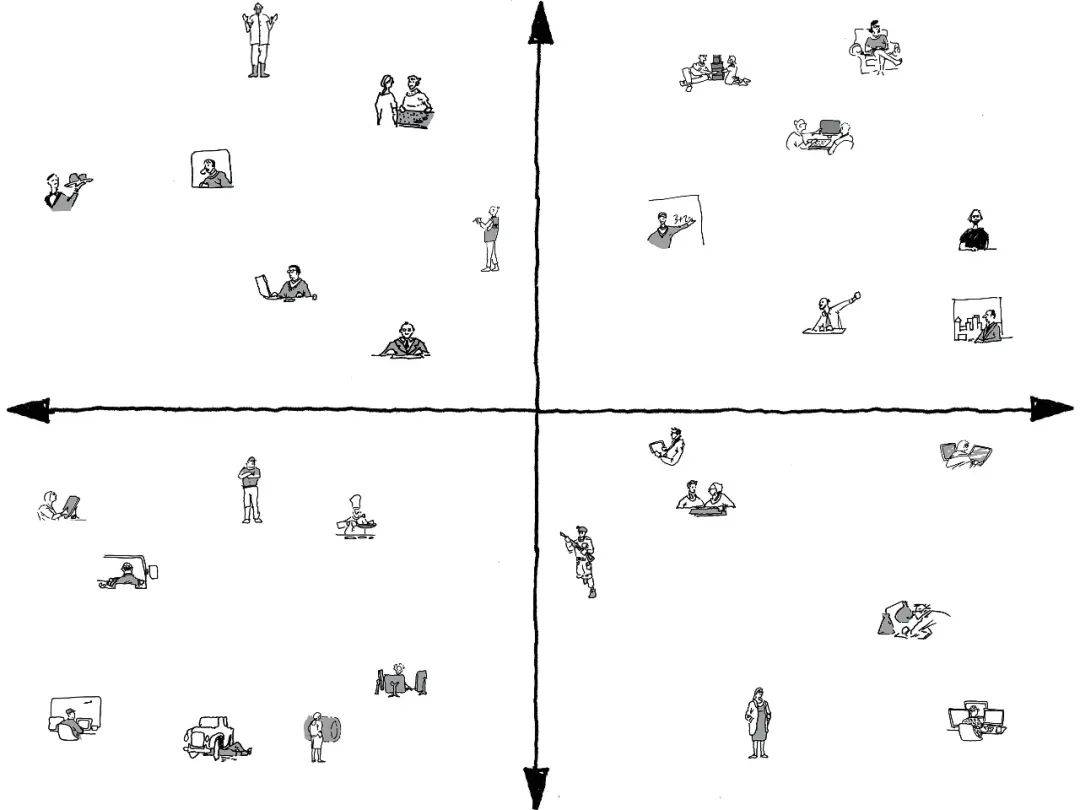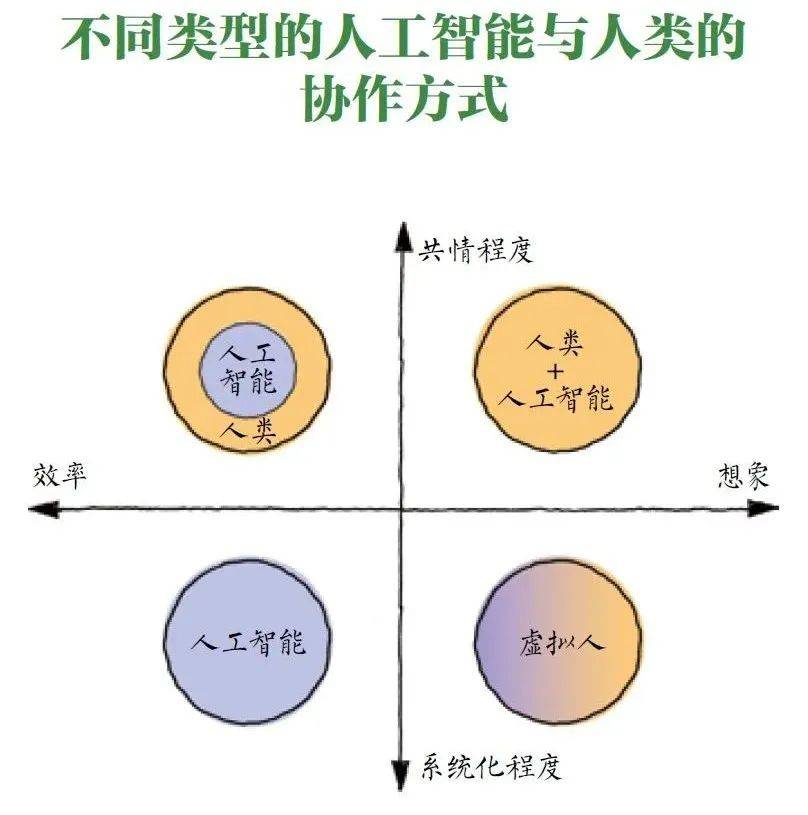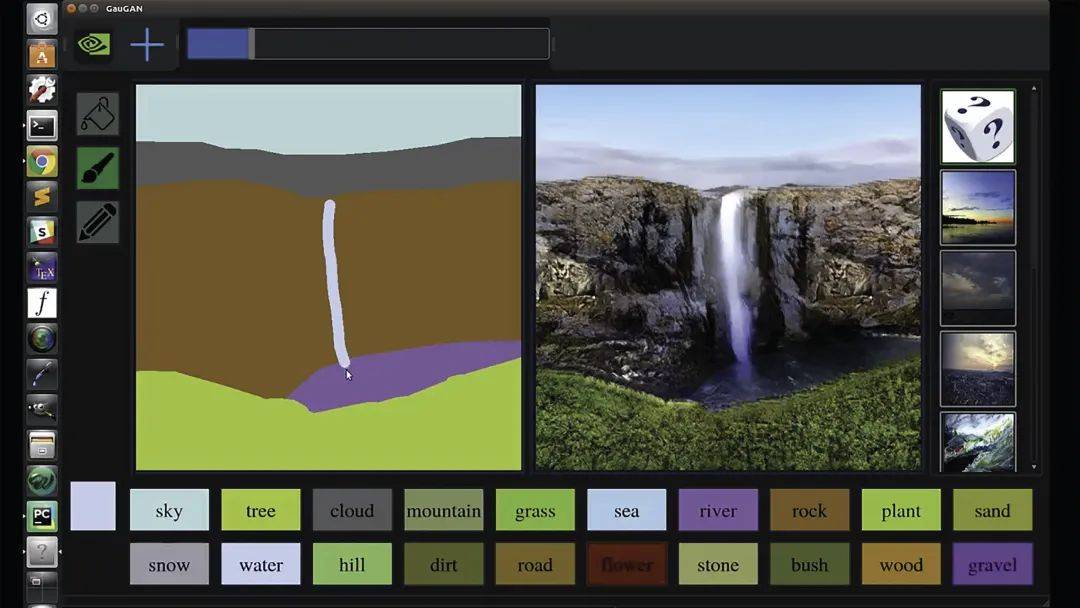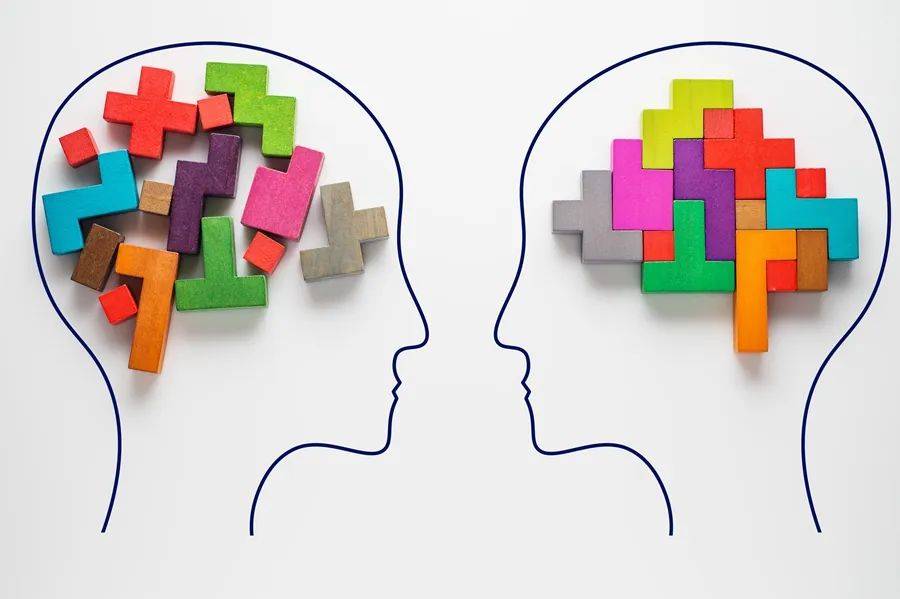

We seek opportunities to understand and use imagination, not only to allocate roles between artificial intelligence and humans, but also to combine the two to enhance the effectiveness of imagination.
Author|Martin Reeves Jack Fuller*
Source | Business Review
Can machines imagine? We usually think of computers as performing calculations and arriving at results based on the instructions we give it. We don’t think of computers as capable of what we would define as imagination: experiencing the unexpected, forming counterfactual thoughts, or exploring entirely new possibilities. Recently, however, artificial intelligence seems to be gradually encroaching on what we call the realm of imagination.
Will we be replaced
For example, the artist Mario Klingemann asked GPT-3’s artificial intelligence text generator to write a text in the style of the British satirical writer Jerome K. Jerome. The story about Twitter.
The Washington Post created 850 reports in one year through its independently developed artificial intelligence algorithm "Heliograf". Digital design and media company AKQA used artificial intelligence to create a new kind of sports - "Speedgate" (Speedgate), and really popularized it, and also held the Speedgate League.
What conclusions can we draw from these examples? Software is making great strides in producing similar human creations, and in some cases has created economic value that cannot be underestimated. So the boundaries between humans and machines are indeed changing, and we should expect this trend to continue.

However, computers are still far from being able to handle some of the basic abilities of imagination. The first is the causal relationship thinking model. GPT-3’s so-called neural network is built on massive amounts of information found on the Internet and in books. On the surface, GPT-3 is a mental model based on real-world information, capable of creating new and less surprising things. But GPT-3 is a language model that can only represent the probability that a string of text appears after another string of text.
After observing systems like GPT-3, artificial intelligence researchers Gary Marcus and Ernest Davis said: “They’re not learning about the world — —They learn about text and the way people use different words in relation to each other. What it does is like a big cut-and-paste job—it stitches in the places where changes are needed in the text it has seen, and It’s not about digging into the underlying concepts behind these texts.”
Artificial intelligence also lacks another most basic part of imagination: the motivation to imagine. Motivation refers not only to the impetus to initiate a process, but also to the guidance of what should be imagined—what is an important part of rethinking.
Artificial intelligence cannot associate words with the world. As philosopher David Chalmers writes, GPT-3 "does a lot of things that require understanding of humans, but it never really connects language to perception and action."
The examples mentioned above about sports, artistic creation, and news media all involve humans playing a bridging role between computer calculations and the real world.
Therefore, we can conclude that if artificial intelligence cannot establish causal models, connect perception and action, and cannot generate desire or frustration without human intervention, then it will not be able to replace humans in the short term. imagination.
But what we can see is that what artificial intelligence creates provides extremely valuable material for human thinking, and humans can turn the output of the machine into a useful result. This is another way of looking at the problem.
Compared to the question of whether we will be replaced, a more meaningful question may be how this huge collaborative system will develop forward. In what ways will artificial intelligence promote human imagination?
Can artificial intelligence help us imagine?
Artificial intelligence can liberate us from routine activities; it can perform many core tasks and superimpose human empathy on this basis; or it can provide continuous stimulation of the imagination.

Inducing imagination through artificial intelligence
Artificial intelligence can liberate us from boring analysis work, especially anomaly monitoring work. Itcan help us find unexpected factors that are conducive to stimulating imagination. As Georg Wittenburg, CEO of automated analytics company Inspirient, explains: “Some things are too simple for algorithms, like the detection of anomalies or outliers in data. Our system tells We've got 14 outliers or 14 anomalous events in this data set - no more, no less - and here's the list of anomalies."
But one limitation that algorithms must obey is that humans are still at the core of the entire framework: what counts as an anomaly for a certain mental model is set by humans. Artificial intelligence is good at discovery, but not at caring. The design of the system should take into account the things we think are important. But Wittenberg’s algorithm can learn what humans are interested in through repeated human-computer interaction and targeted analysis.
Enriching ideas through artificial intelligence
Artificial intelligence makes imagination even more powerful, and it can promote the development process of thinking models. There is a type of artificial intelligence tool called a "hybrid active" interactive system, in which artificial intelligence guides and deepens human decision-making by making its own suggestions. Such tools are currently used in the fields of translation and customer service.
But we can imagine how this kind of tool will be used when we rethink: when we want to write or draw ideas about new health care companies, artificial intelligence can use relevant data, similar case references, various Images and anecdotes feed our imaginations.

Colliding with the world through artificial intelligence
Interacting with artificial intelligence can be an activity somewhere between chatting with a human and exploring the world. We can take an early idea and tell it to the AI: “Here’s my idea for a new kind of bank, please give me feedback along these points as a financial analyst might give it” or “… as a science fiction writer might give it” feedback". When you get the results it gives, add additional requirements, such as "Now make it a little more exciting," or "Now make it a little more critical."
Communication through artificial intelligence
A core challenge faced by imagination is the difficulty in communicating mental models. AI can easily help us solve this problem by turning abstract mental models into images or stories. For example, Nvidia has developed a tool that converts broad conceptual doodles drawn by humans into photo-realistic landscapes.
It is conceivable that if we have such technology in the future, we can quickly outline the appearance of a new product or a reimagined business form. This tool should be able to work with text or visual elements.
We can roughly draw a few strokes of our ideas about the future company, input them into the artificial intelligence system, and then the artificial intelligence will complete it based on some wonderful stories, past precedents, analogy analysis of other things, and various image references. The addition of specific elements, in other words, the refinement and polishing of artificial intelligence, generates something that can more effectively spread ideas and inspire others.
Building a new normal through artificial intelligence
Artificial intelligence can help us extract the common features or core features behind the successful application of a concept, which is crucial for the standardization and process of innovative things, and even creating a new normal.
Although artificial intelligence cannot yet grasp cause and effect, it can help us provide effective support in the design of operation manuals, solutions, and user interfaces through the identification of patterns. As customers increasingly have their product usage habits captured in data form, the rules for coding new things become more targeted.
For example, this approach can be applied to data analysis of new farming methods. It can help us determine which characteristics are applicable in all situations, and let us understand what farmers need to do to realize the potential of new methods. .
For another example, by studying the data on the use process and results of a certain experimental educational technology, we can delineate the range of features that can be applied to the new platform and guide people to learn to use these functions.
One thing we need to face is that with artificial intelligence, the continuous evolution of a concept will become easier, because artificial intelligence can gain insights into new changes from the interaction data between products and customers, and thus continuously adjust instructions. and user interface upgrades.
Reviving imagination through artificial intelligence
Finally, artificial intelligence can help us identify and track those conditions in businesses that are essential to maintaining duality in thinking. For example, algorithms can evaluate the number of interactions and attempts that occur within a company and, based on this, determine whether such a company is able to sustain imagination.
Or we can also use artificial intelligence to analyze the behavior and characteristics of existing employees or future employees to ensure that the company can continuously harvest talents with counterfactual thinking.
What can artificial intelligence teach us
In addition to improving our own imagination ability, putting some energy into developing more imaginative artificial intelligence technology may allow us to more effectively understand what imagination is and how to better utilize it.
No matter what stage of development artificial intelligence technology is at, the process of trying to compile imagination is the process in which we force ourselves to clearly present the things that rely most on intuition and are the least clear. Perhaps humans are better at imagining, but trying to construct artificial imaginations may teach us more about how imagination occurs on an individual and collective level.
This is particularly important for imagination at the collective level, that is,making the entire organization full of imagination.
Imagination through confrontation
One of the most interesting artificial intelligence algorithms already being used in creative applications is called "generative adversarial networks" (GAN), which works through two opposing networks, one is the generative model, and the other is the discriminant model.
How GANs work is related to an important theme we have discussed both individually and collectively: the importance of multiple minds and cognitive diversity. What would it be like to apply GAN to the company level? We may need to set up a network of people who are tied to each other, some people are responsible for creating, and others are responsible for criticizing these creations.

The key is that the two parties should be able to learn from each other while performing their own responsibilities, and constantly polish and optimize their respective work results. This real-life version of GAN can be launched through games, competitions, or other forms that can create effective confrontations. Both parties in the network continuously adjust their operating methods based on the other party's output results and lessons learned.
Replace program code with prompts. Today’s most powerful artificial intelligence algorithms, such as GPT-3, have a very gratifying feature, that is, users interact with them not through traditional programming methods. Instead, use prompts.
Another way to express it: When humans input a piece of information, it is like planting a seed, which will grow into a complex response, thereby stimulating people's imagination. When using GPT-3, you can also adjust a setting called "optimal", which refers to the number of results the artificial intelligence will eventually output, and the artificial intelligence will choose one of them to display.
Perhaps we can imagine applying similar rules to the organizational level.Just like a prompt can mobilize the rich knowledge reserve in artificial intelligence, a CEO can also make a prompt through text, images, videos, etc., allowing the entire company to respond to it.
These response results may be presented to decision makers through artificial intelligence or selected by an intermediary team to further stimulate their imagination. Crucial to the entire process is speed: the goal is not to get a polished project proposal or well-produced video content in one fell swoop, but to get a quick response and get it back to management quickly so it keeps showing up. Within the scope of management's discussion.
Controlling the "temperature" Another inspiring function of GPT-3 is to adjust the "temperature" of the artificial intelligence response results, that is, the degree of deviation from high-probability response results.
When you want artificial intelligence to solve a math problem or a factual question, you should turn down the "temperature": you definitely don't want this type of answer to be too random or off-the-wall. But when your goal is to increase counterfactual ideas, it makes sense to turn up the heat.
We can also imagine practicing this approach in enterprises.Ideally, business leaders should have the ability to debug different temperatures for different departments in the business, especially for certain work processes in the project.Some companies are already doing this, setting up creative departments dedicated to crazy and bold projects.
But we can promote this approach and make it a principle throughout the company. A manager can set a temperature of 1 to 10 for each part of the job he assigns. For the retail analysis report he requested for the last quarter, you can set the temperature to 1 ("provide me with the factual data that we usually pay attention to"), to 6 ("add some speculative discussions"), or to 10 (“Ask counterfactual questions and find new data that explore those questions”).
Although it is far from reaching the point where machines will replace humans, the boundary between the two has undoubtedly changed. This change will continue, and new opportunities will continue to emerge in the future to help us better understand and utilize imagination.We seek opportunities to understand and use imagination, not only to allocate roles between artificial intelligence and humans, but also to combine the two to enhance the effectiveness of imagination.Imagine us side by side with artificial intelligence!
About the author: Martin Reeves, chairman of the Henderson Think Tank of the Boston Consulting Group (BCG) and senior partner of BCG's San Francisco office.Jack Fuller, founder of a mental and physical health management company, was once the topic manager of BCG Henderson Think Tank. This article is excerpted from their new book The Imagination Machine (the Chinese version of "Making Ideas" will be published by CITIC Publishing Group in 2023).
(This article is for knowledge sharing only and does not constitute providing or relying on investment, accounting, legal or tax advice. Any investment decision based on this is at your own risk.)
Previous Issues of Wonderful Magazine
Swipe to see more
The above is the detailed content of What can artificial intelligence teach us?. For more information, please follow other related articles on the PHP Chinese website!
 Application of artificial intelligence in life
Application of artificial intelligence in life What is the basic concept of artificial intelligence
What is the basic concept of artificial intelligence China Bitcoin Trading Platform
China Bitcoin Trading Platform How to decrypt bitlocker encryption
How to decrypt bitlocker encryption How to sell LUNA coins
How to sell LUNA coins How to change devc++ to Chinese
How to change devc++ to Chinese How to recover data from mobile hard drive
How to recover data from mobile hard drive What plug-ins are needed for vscode to run HTML?
What plug-ins are needed for vscode to run HTML?



